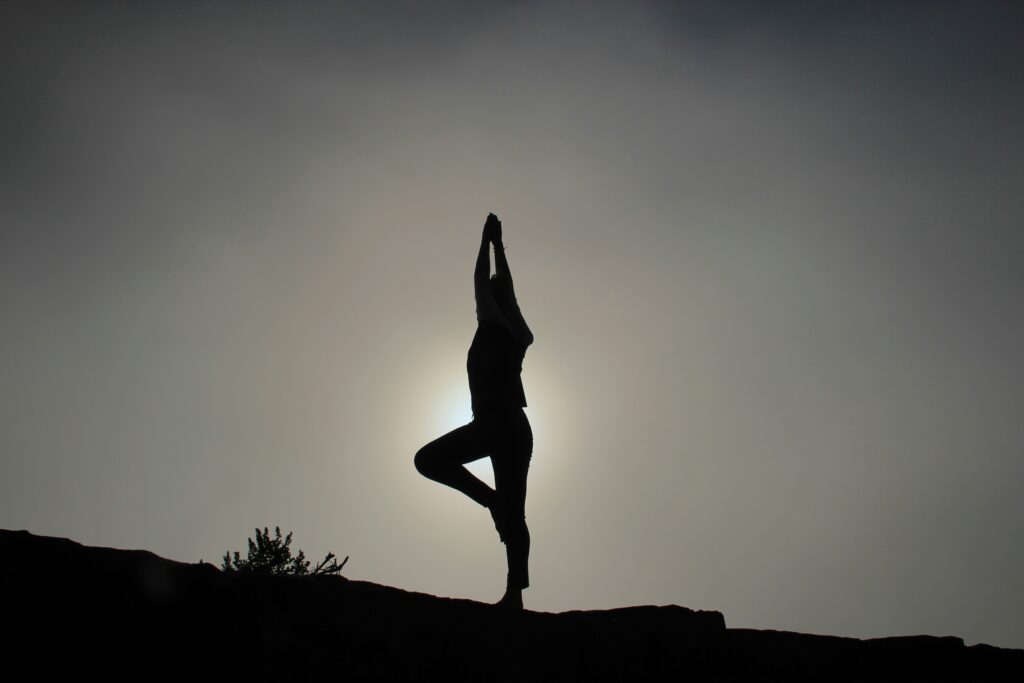Welcome to the world of yoga! Whether you’re seeking improved flexibility, stress relief, or a deeper connection to your body and mind, yoga is an excellent practice to begin. This comprehensive guide will walk you through everything you need to know to start your yoga journey with confidence.
Some of the links in this post are affiliate links, which means we may earn a small commission if you make a purchase through them at no extra cost to you.
What Is Yoga?
Yoga is an ancient practice that originated in India over 5,000 years ago. Its name comes from the Sanskrit word “yuj,” meaning to unite or join, reflecting its aim to harmonize the body, mind, and spirit.
Yoga involves physical postures (asanas), breath control (pranayama), and meditation. Its philosophy also emphasizes ethical principles and self-discipline, making it a holistic approach to well-being. Beginners often find yoga welcoming, as its various styles cater to all fitness levels and personal preferences.
Benefits of Yoga for Beginners
Starting yoga comes with a multitude of benefits, including:
- Improved Flexibility: Regular practice stretches and lengthens muscles, enhancing overall flexibility.
- Increased Strength: Many poses require balance and endurance, building strength over time.
- Stress Relief: Breathing exercises and mindfulness reduce anxiety and promote relaxation.
- Better Posture: Yoga encourages proper alignment, alleviating back pain and tension.
- Enhanced Mental Clarity: Meditation and breathwork cultivate focus and inner peace.
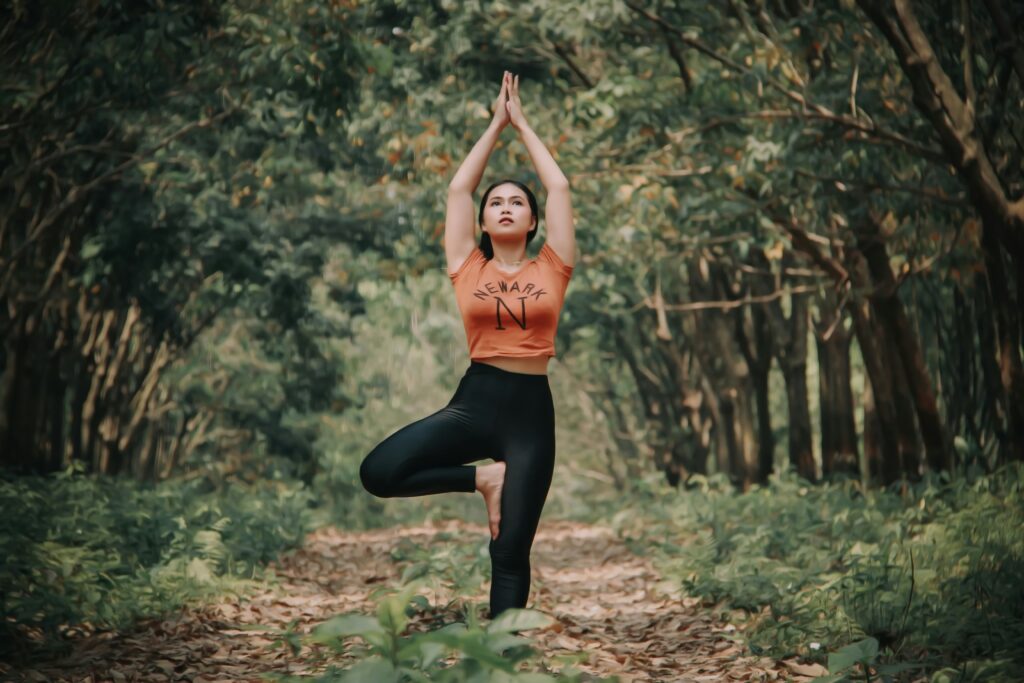
Essential Yoga Equipment
While yoga requires minimal equipment, a few key items can enhance your practice:
1. A Reliable Yoga Mat
A good yoga mat provides grip, cushioning, and stability. Consider the Manduka PRO Yoga Mat, known for its durability and support, making it perfect for beginners.
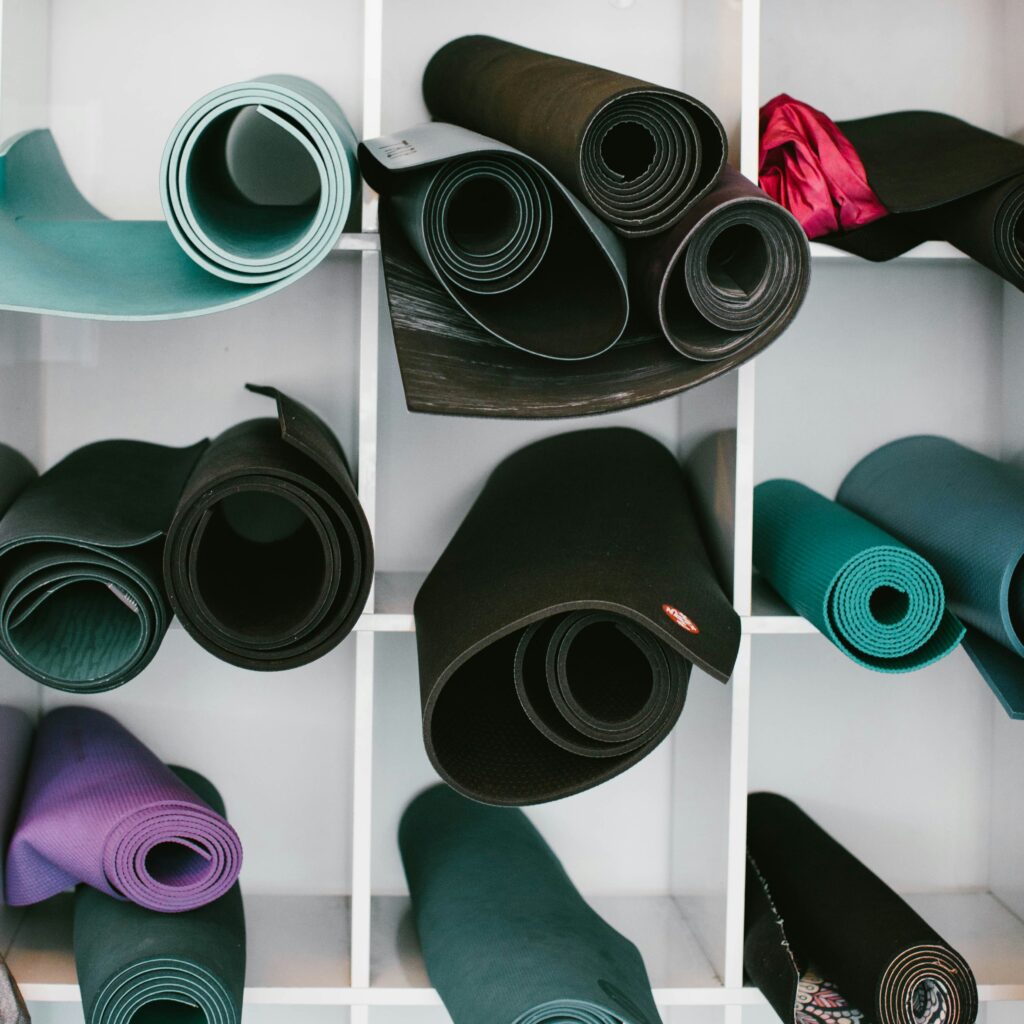
2. Yoga Blocks and Straps
These accessories help you achieve proper alignment and assist with flexibility. The Gaiam Yoga Block and Trideer Stretching Strap are excellent starter options.
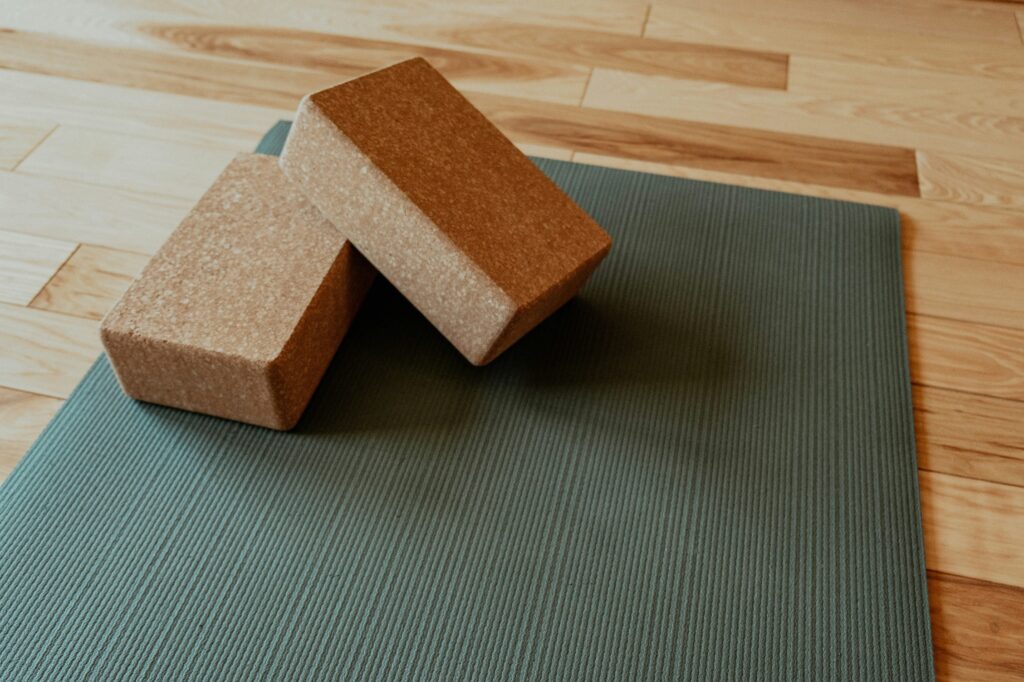
3. Comfortable Yoga Clothing
Opt for breathable, stretchy fabrics like the CRZ Yoga Butterlift Leggings for freedom of movement during poses.
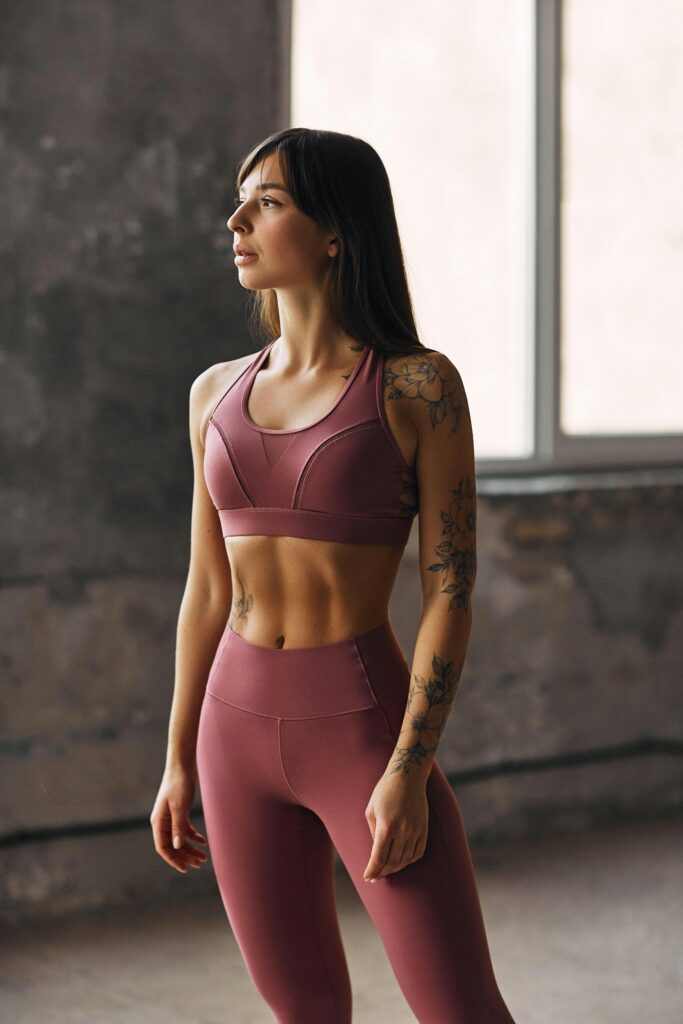
4. Additional Accessories
For restorative yoga, items like bolsters or cushions, such as the Gaiam Yoga Bolster, can provide added support.
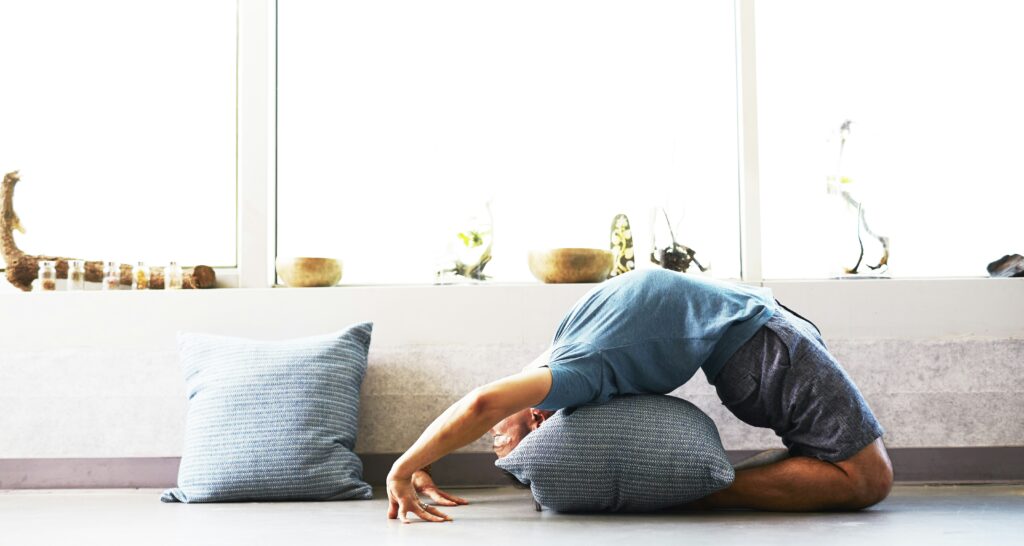
Choosing a Yoga Style
Yoga comes in many styles, each offering unique benefits. Here are a few beginner-friendly options:
- Hatha Yoga: Focuses on basic postures and slow movements, ideal for newcomers.
- Vinyasa Yoga: Links breath with movement in a flowing sequence of poses.
- Yin Yoga: Involves holding poses for extended periods to stretch connective tissues.
- Restorative Yoga: Centers on relaxation and stress relief through gentle poses.
Basic Yoga Poses for Beginners
Mastering foundational poses helps build confidence and prepares you for more advanced practices. Here are a few essential asanas:
1. Mountain Pose (Tadasana)
- How to do it: Stand tall with feet together, arms at your sides. Distribute weight evenly on both feet, engage your thighs, and lengthen your spine.
- Benefits: Improves posture and body awareness.
2. Downward-Facing Dog (Adho Mukha Svanasana)
- How to do it: Start on hands and knees, tuck toes under, and lift hips toward the ceiling, forming an inverted “V” shape.
- Benefits: Stretches the spine, strengthens the arms and legs, and improves circulation.
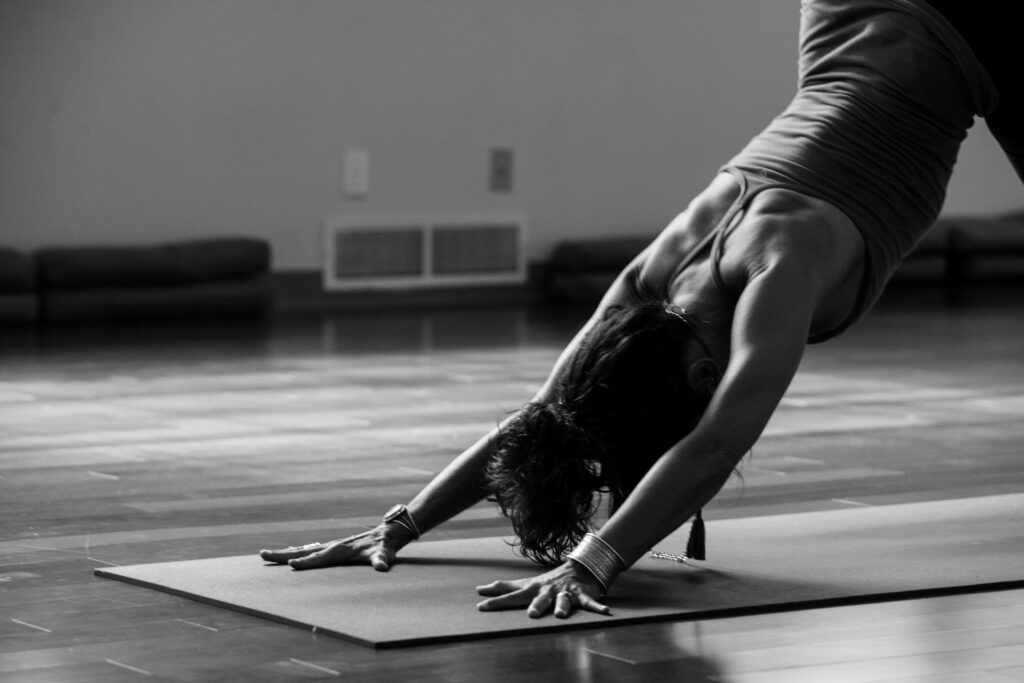
3. Child’s Pose (Balasana)
- How to do it: Sit back on your heels, fold forward, and rest your forehead on the mat with arms extended.
- Benefits: Provides relaxation and gently stretches the back.
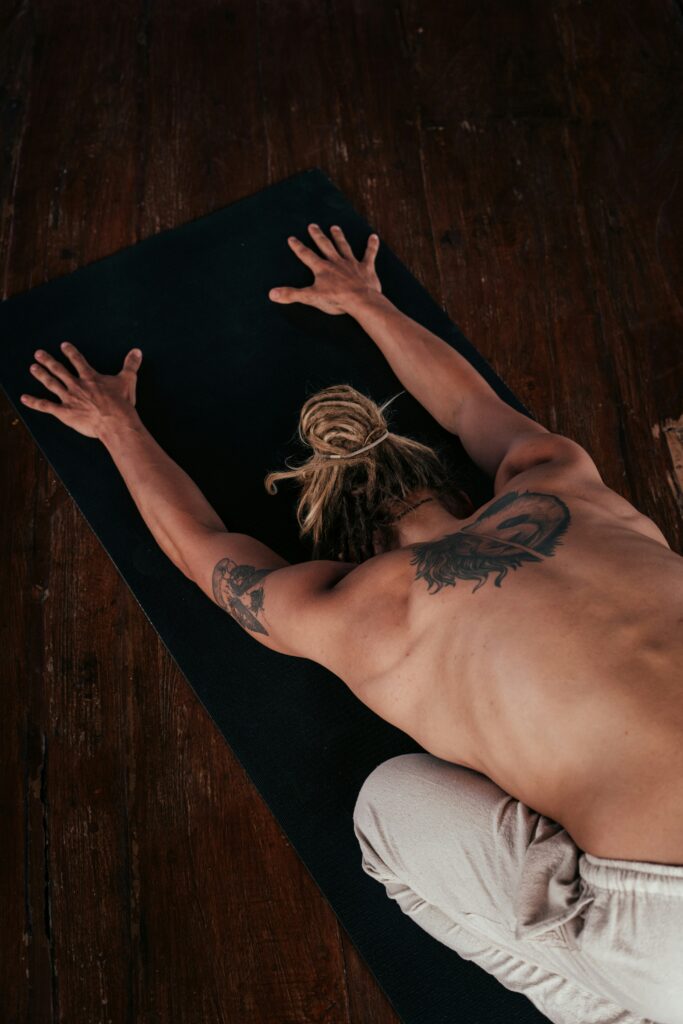
4. Warrior I (Virabhadrasana I)
- How to do it: Step one foot back, bend the front knee, and raise your arms overhead.
- Benefits: Builds leg strength and opens the chest and hips.
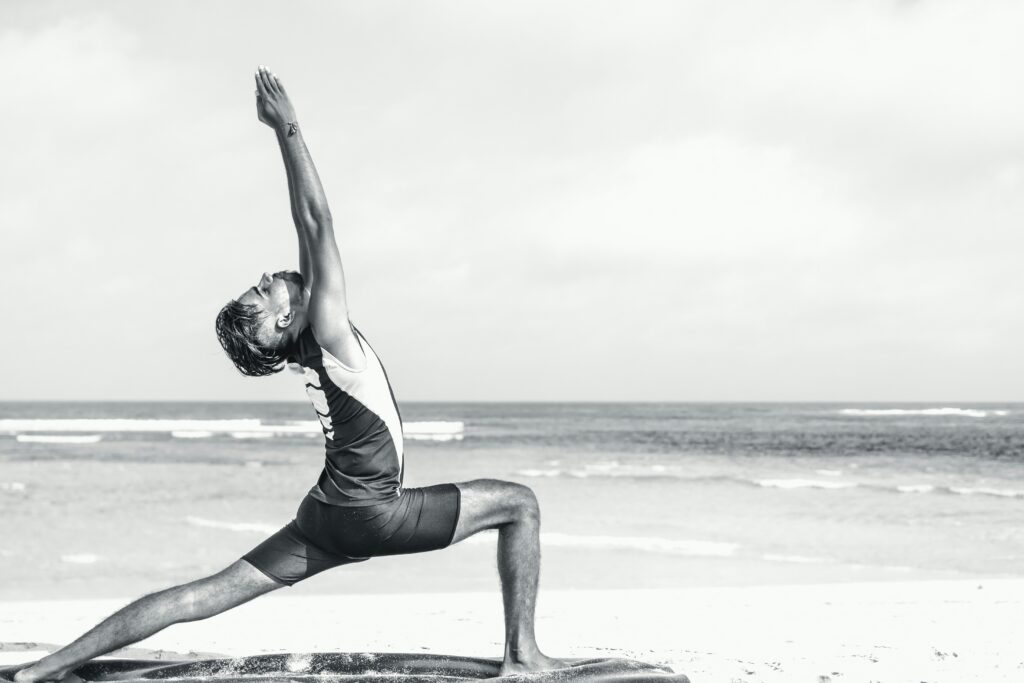
Creating a Sustainable Yoga Routine
Consistency is key to reaping the benefits of yoga. Here’s how to build a routine that works for you:
- Set Realistic Goals: Start with 2-3 sessions a week and gradually increase frequency.
- Find Your Best Time: Morning sessions energize your day, while evening practice helps you unwind.
- Dedicate a Space: Create a calm, clutter-free area in your home for yoga.
- Incorporate Short Sessions: Even 10-15 minutes a day can make a difference.
- Use Online Resources: Platforms like YouTube and yoga apps offer beginner-friendly classes.
Tips for Beginners
- Listen to Your Body: Avoid pushing into pain or discomfort.
- Focus on Breath: Proper breathing enhances the benefits of each pose.
- Be Patient: Progress takes time—celebrate small victories along the way.
- Seek Guidance: Join a beginner’s class or workshop for personalized instruction.

Conclusion
Embarking on your yoga journey is an empowering step toward improved health and well-being. By understanding its principles, benefits, and essential practices, you can confidently roll out your mat and start exploring the transformative world of yoga. Remember, yoga is not just about physical poses, it’s a practice of self-discovery and mindfulness that can enrich every aspect of your life. Enjoy your journey!
Follow Us on Pinterest
For more yoga tips, healthy living advice, and inspiration, follow us on Pinterest here. Stay connected to explore new ideas and enhance your wellness journey!
Affiliate Disclosure
As an Amazon Associate, My Healthy Health earns from qualifying purchases. We only recommend products we genuinely believe will support your yoga journey.

